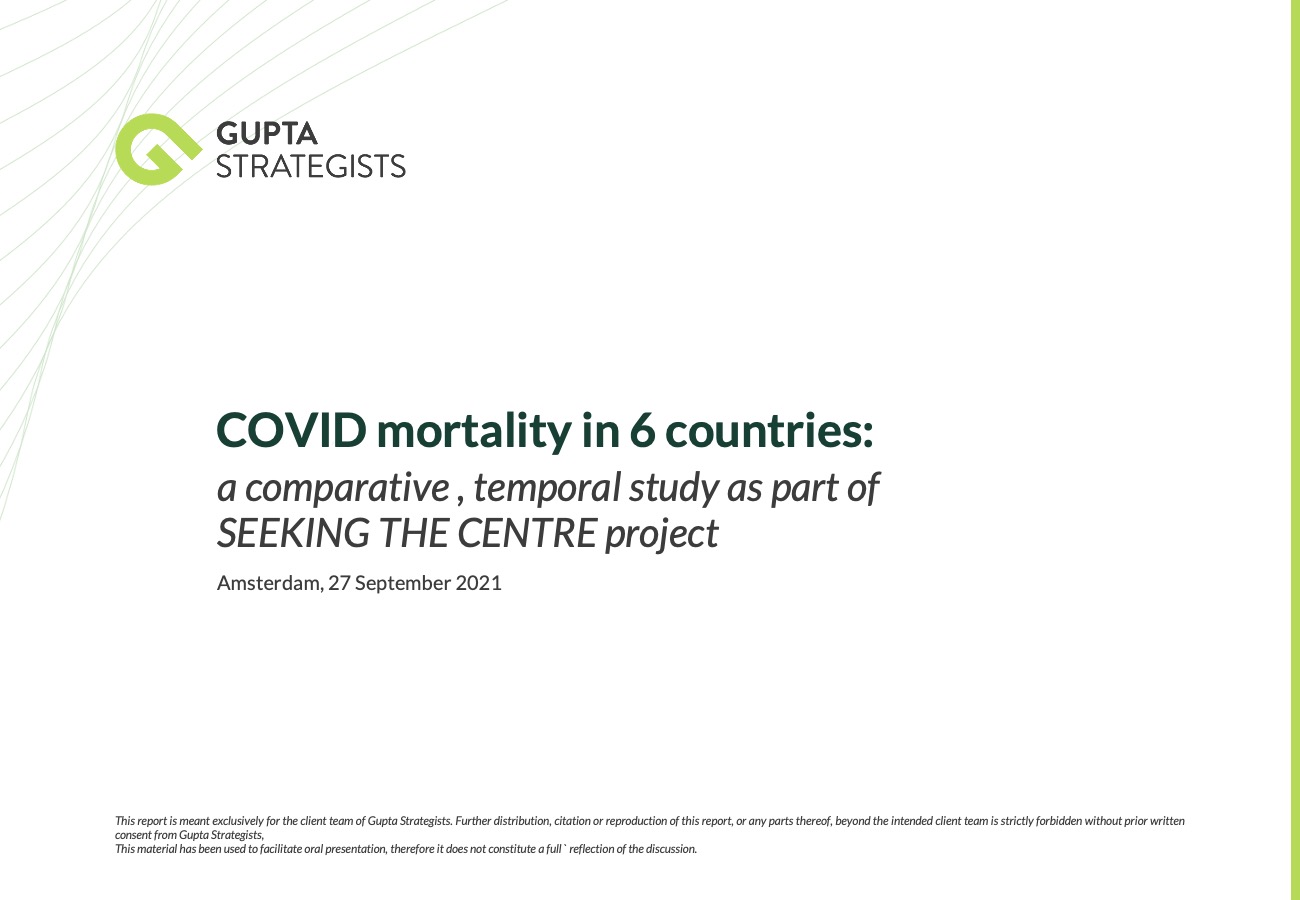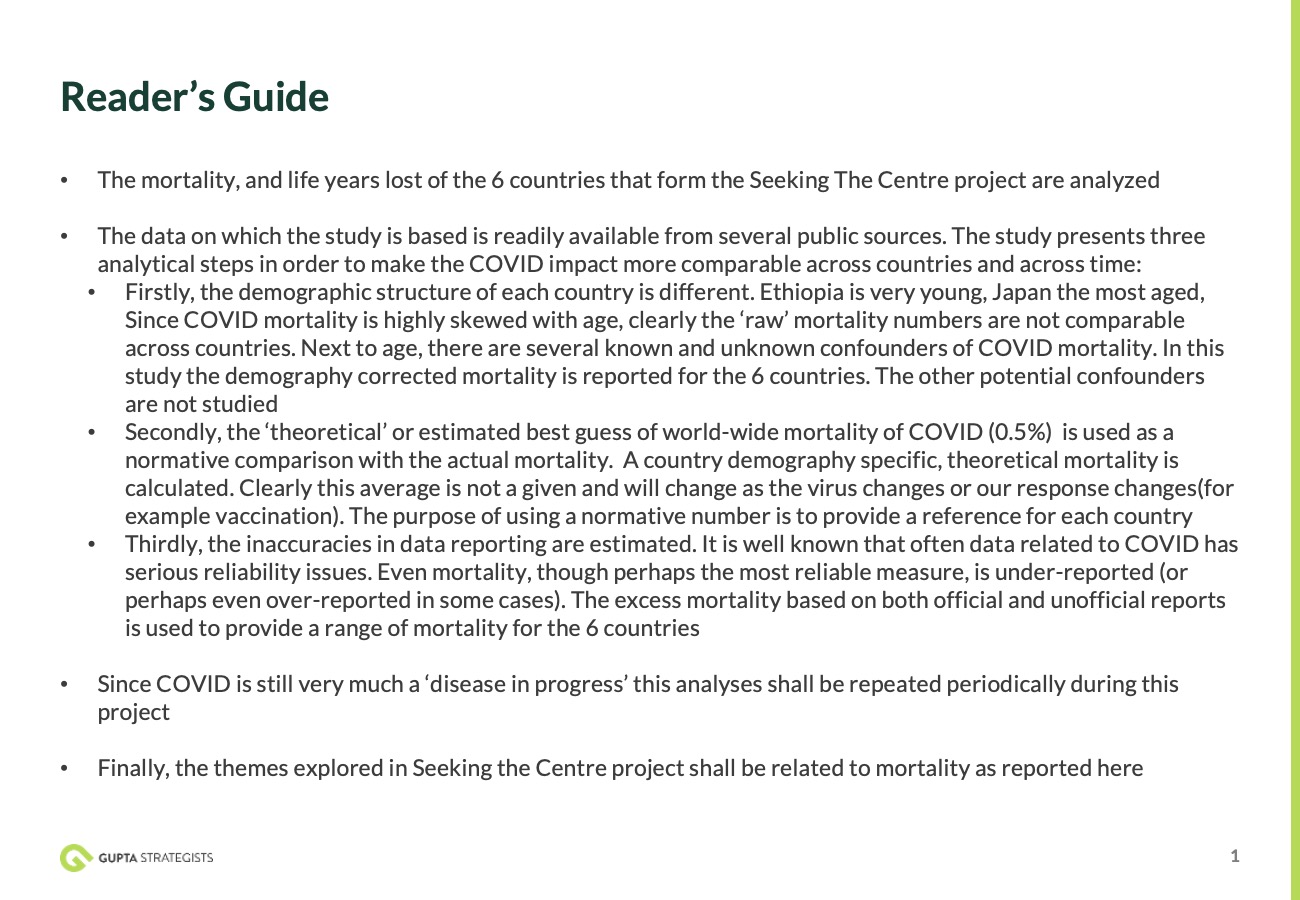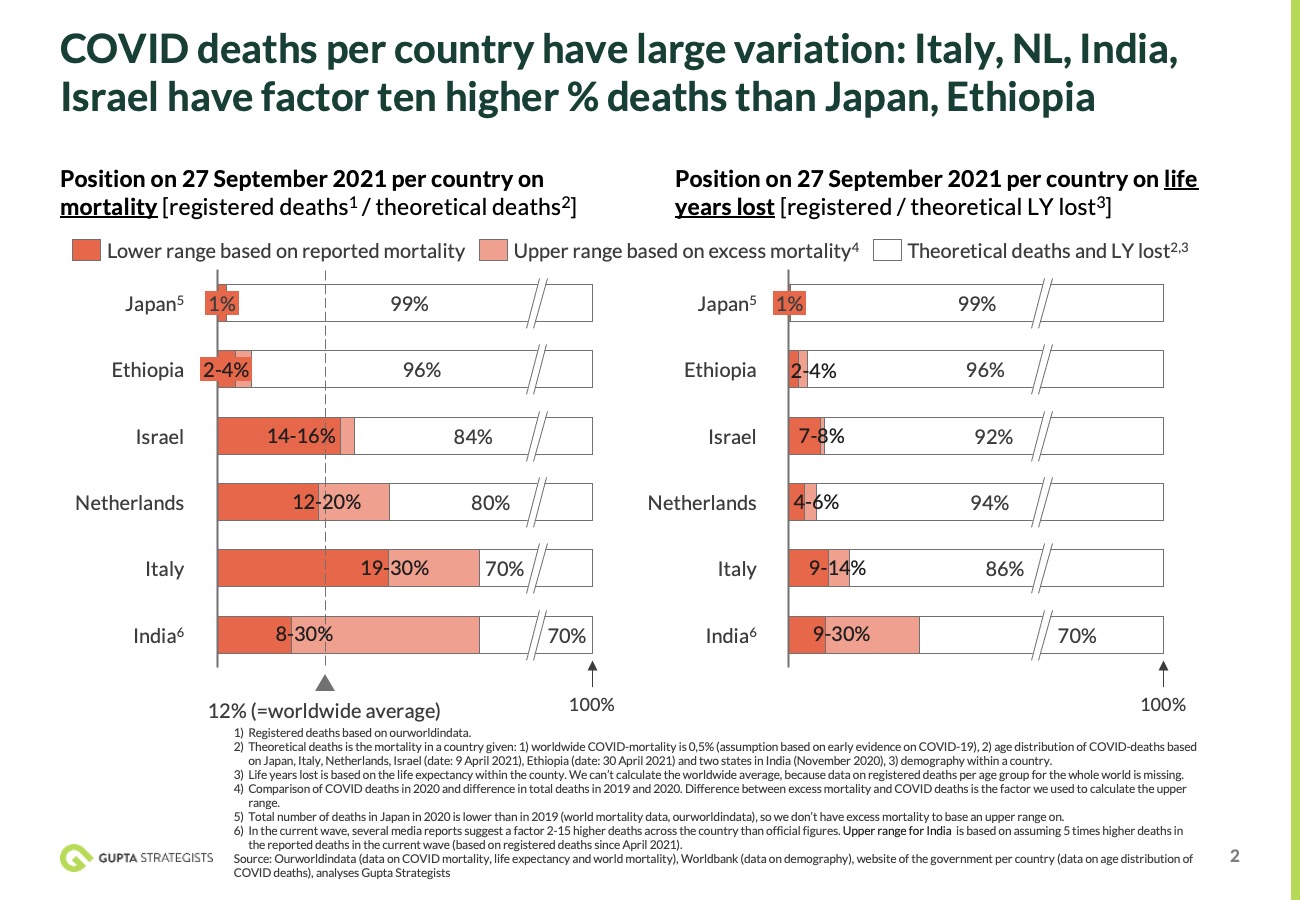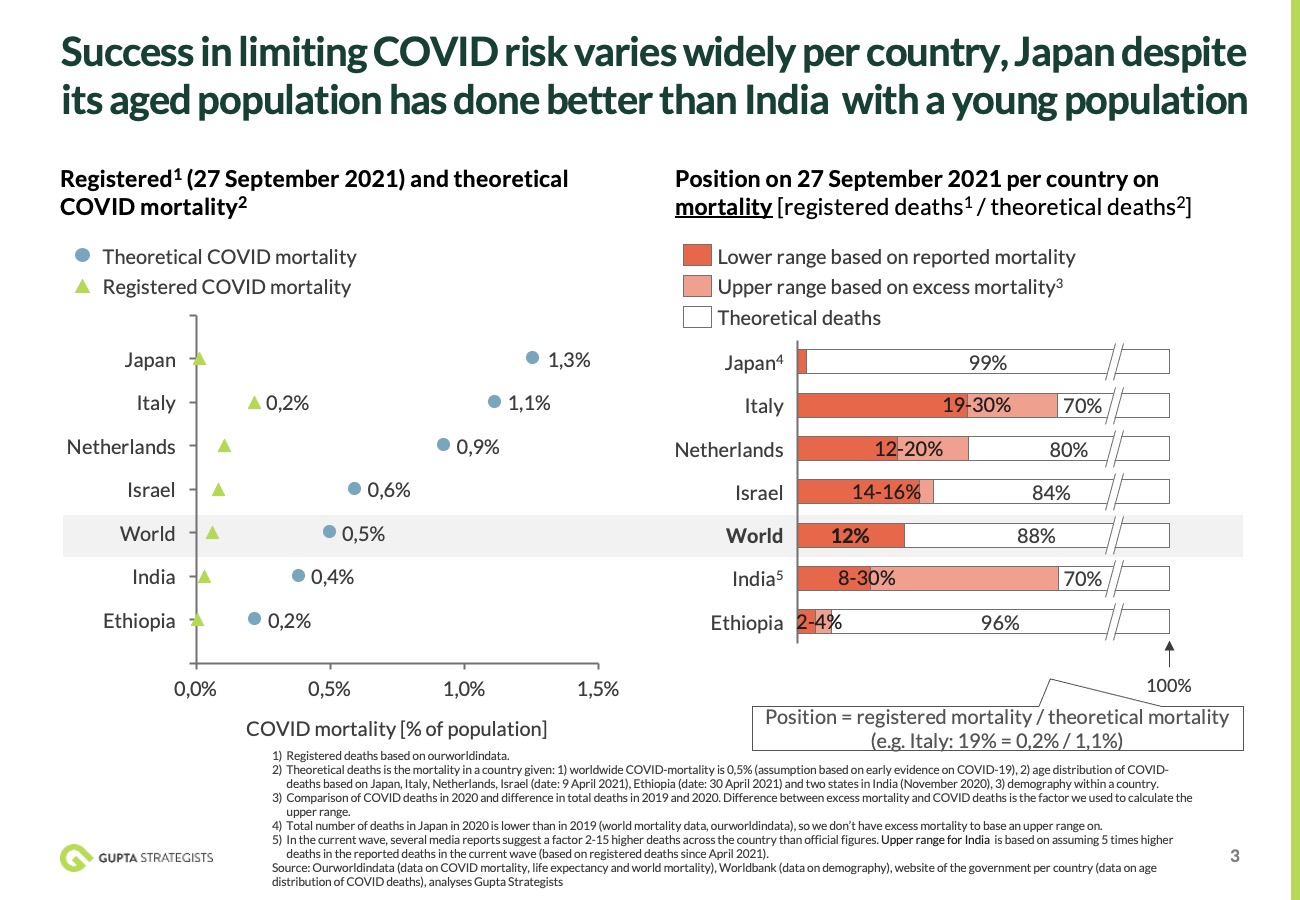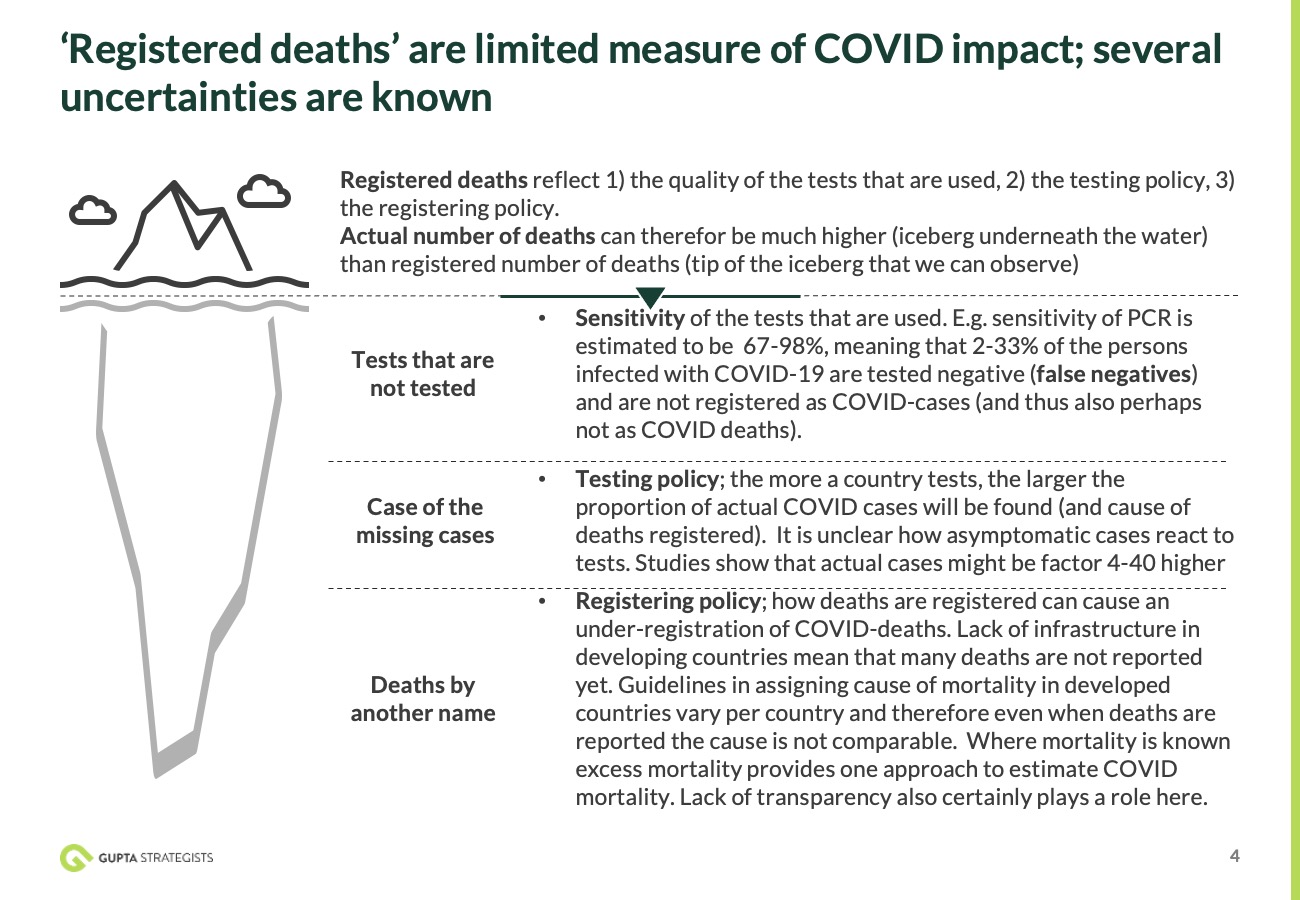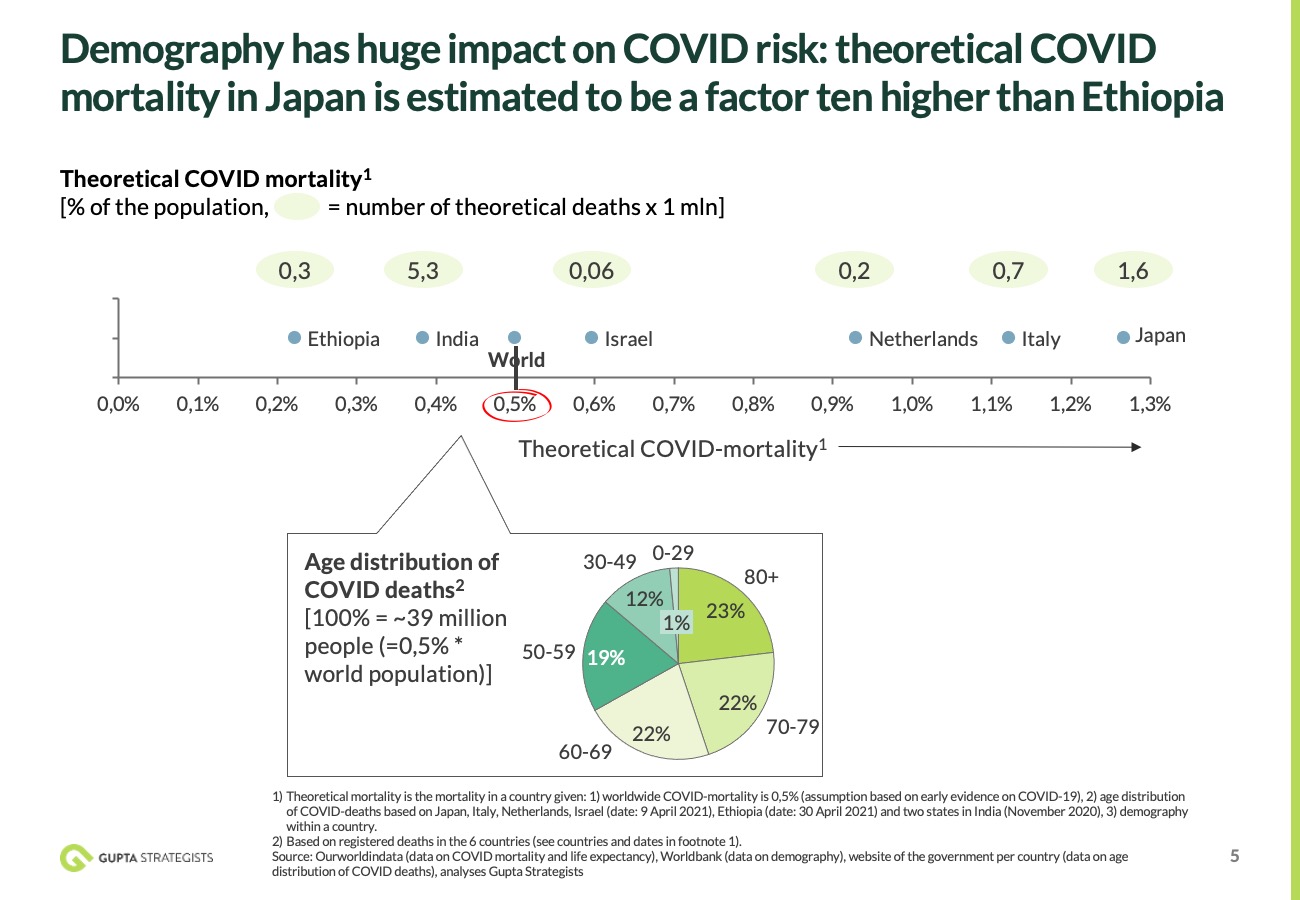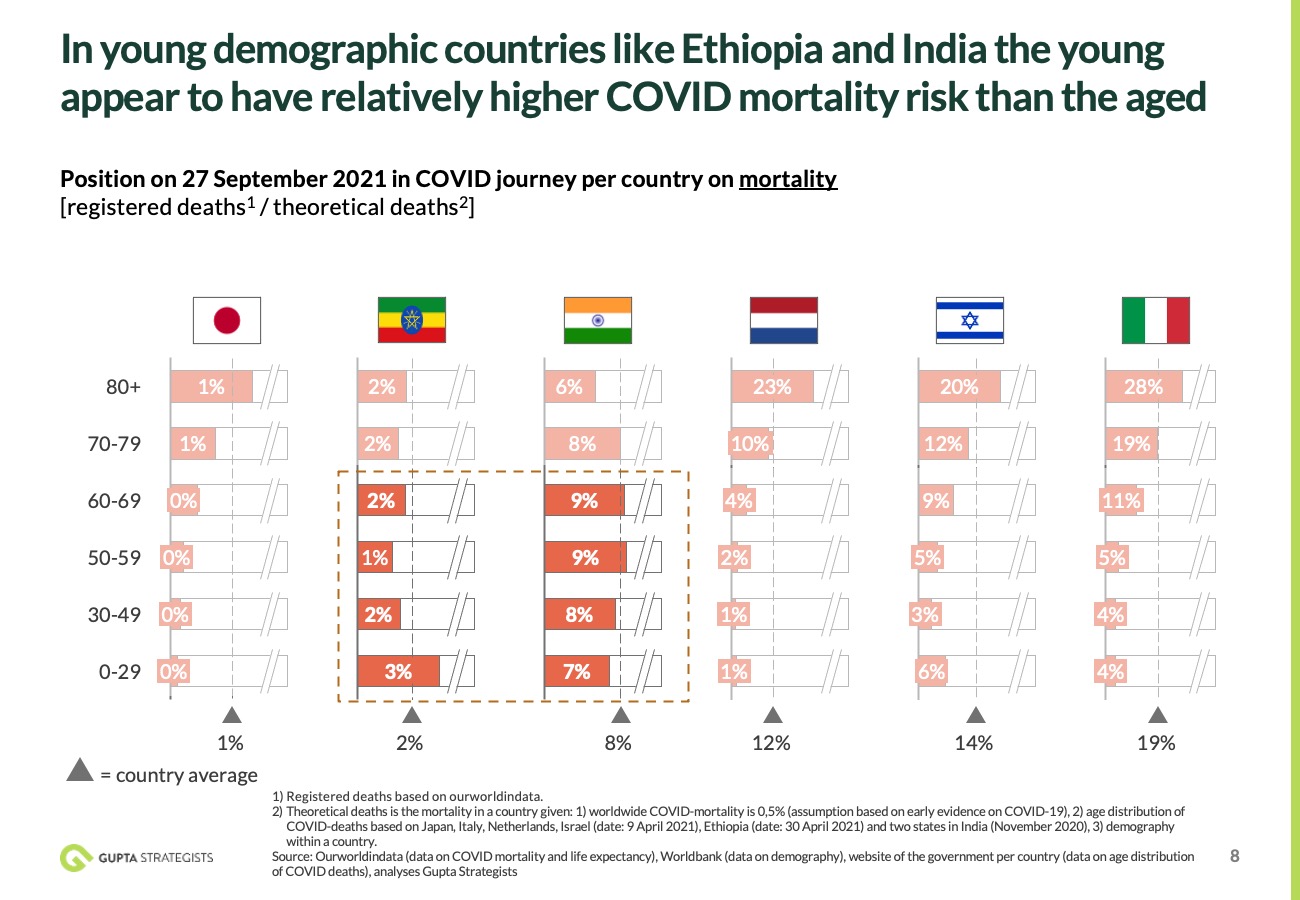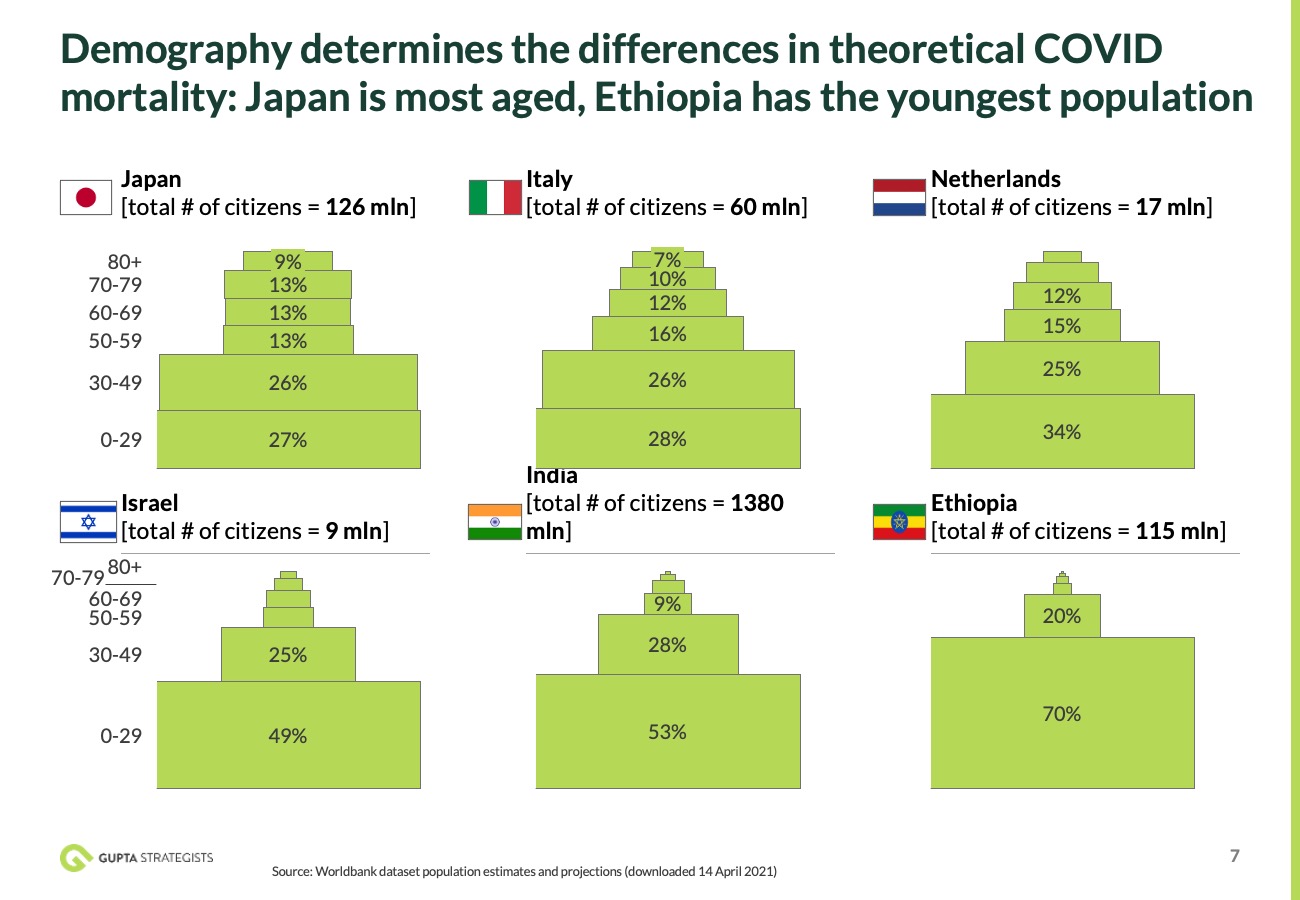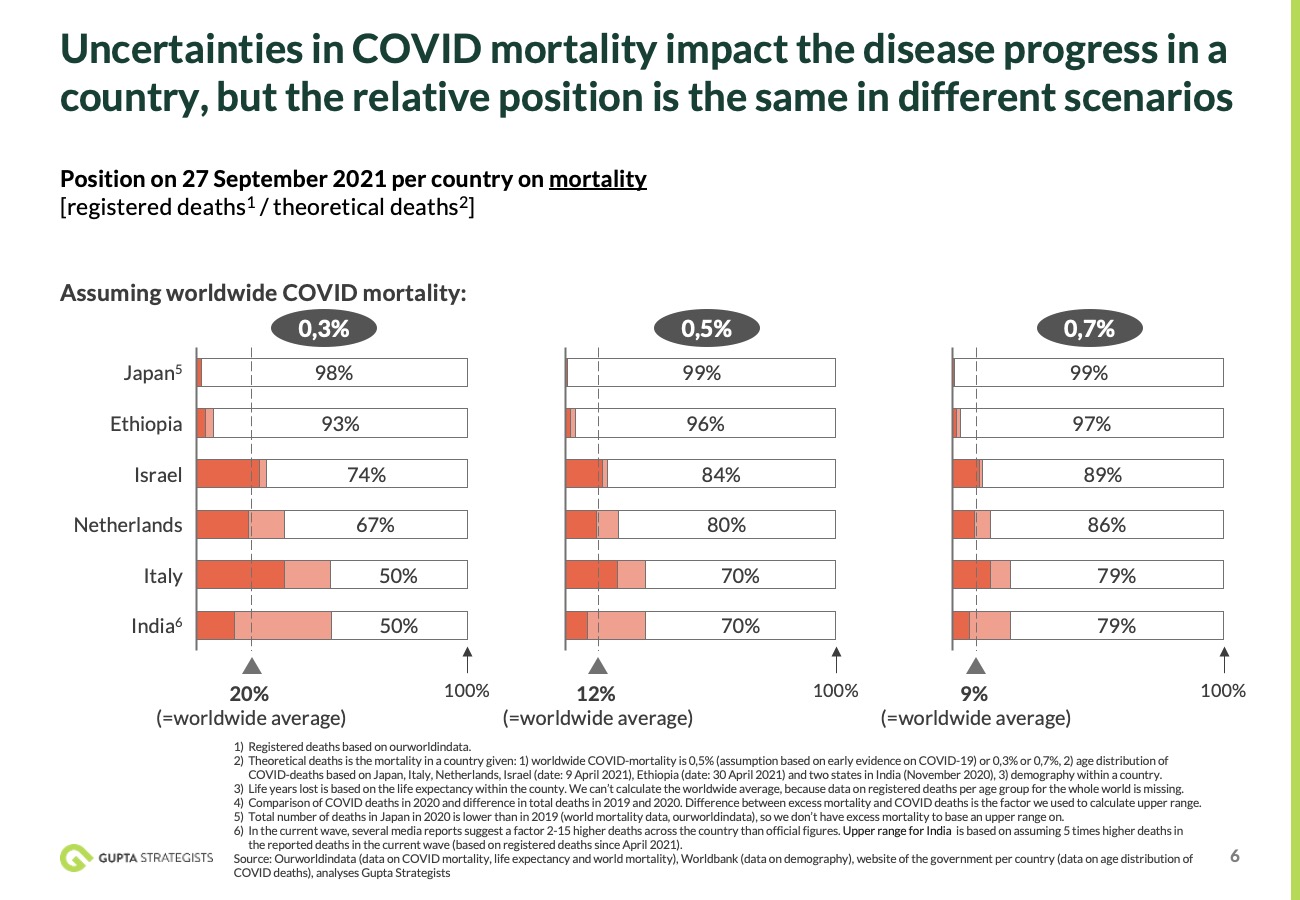Study

Simple two-step prevention model
as framework to chart and understand COVID interventions
and outcomes across countries
We use a simple two-shell prevention model as a framework to chart and understand COVID interventions and outcomes across countries (see Figure). The model contains two shells, representing two types of interventions to protect people from the health-related disabilities due to the corona virus.
The first shell: Primary Interventions
Countries undertake interventions to prevent people from getting infected by the corona virus in the first place (Primary Interventions). Preventing infections is also considered important to ensure that the medical care or secondary intervention shell is not overwhelmed by sheer number of those who require medical care.
An exhaustive set of primary interventions is impossible to provide. Lockdowns, masks, social distancing, testing, contact tracing, quarantining, and vaccination are a few examples.
The potential impact of primary interventions can be viewed as a product of three factors: 1) the scope of the intervention itself, 2) the timing (start and end) of the intervention, and 3) the compliance or implementation success.
A total lockdown including banning international travel has a much larger scope and thus potential impact than closing shops only. In both interventions, timing is also important: optimally timed lockdowns when transmission rates are low but rising and lifting when transmission is low and declining again are better. Finally, a country can introduce strict lockdowns but if the actual compliance is low, then the realized impact is much lower.
.
The second shell: Secondary Interventions
Countries undertake interventions to prevent people from getting infected by the corona virus in the first place (Primary Interventions). Preventing infections is also considered important to ensure that the medical care or secondary intervention shell is not overwhelmed by sheer number of those who require medical care.
An exhaustive set of primary interventions is impossible to provide. Lockdowns, masks, social distancing, testing, contact tracing, quarantining, and vaccination are a few examples.
The potential impact of primary interventions can be viewed as a product of three factors: 1) the scope of the intervention itself, 2) the timing (start and end) of the intervention, and 3) the compliance or implementation success.
A total lockdown including banning international travel has a much larger scope and thus potential impact than closing shops only. In both interventions, timing is also important: optimally timed lockdowns when transmission rates are low but rising and lifting when transmission is low and declining again are better. Finally, a country can introduce strict lockdowns but if the actual compliance is low, then the realized impact is much lower.
For example, both too few ICU beds, and not using the available ICU beds judiciously based on medical need and protocols, can be an issue.
.
How we use this framework?
In this project we relate primary interventions to outcomes of COVID (age corrected mortality and age corrected life years lost) in six countries. The themes that contribute to primary prevention under study here are social cohesion, lockdowns, and social distancing. Other primary interventions which may be pursued by individual photographers in their countries are vaccination, masks, testing, quarantining etc. Secondary intervention themes are, as of yet, not a part of this study.
While we relate the interventions to the outcomes COVID mortality and life years lost, the interventions have also other consequences (collateral cost and benefit). Economic impact is one such outcome, which shall be the fourth theme explored in all six countries. Other consequences which may be pursued by individual photographers are, non-COVID healthcare impact, environmental impact, economic polarization, work and school related innovations etc.
.
COVID mortality in 6 countries: a Gupta Strategists analysis
If you are watching this from a mobile device please download the full pdf
